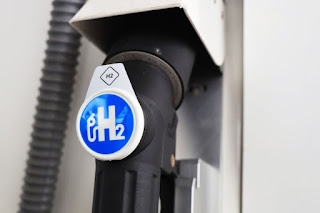One can split an atomic nucleus to produce energy, but can you also split water to create environment-friendly hydrogen fuel? Doing so currently has major drawbacks: it is both time and energy intensive.
But now, researchers at Ben-Gurion University of the Negev in Beersheba and the Technion-Israel Institute of Technology in Haifa have taken a different path. They have identified new pathways that would speed up the catalytic process and reduce the required electrical energy costs significantly.
Their splitting process is assisted by solar energy, which is known scientifically by the term photoelectrochemistry, and lowers the amount of the invested electrical energy needed to break the chemical bonds in the water molecule to generate hydrogen and oxygen.
Oxygen evolution – the process of generating molecular oxygen (O2) by a chemical reaction, usually from water – requires the transfer of four electrons to create one oxygen molecule and then the addition of two hydrogen molecules to make water.
Oxygen evolution from water is carried out via oxygenic photosynthesis, which involves the electrolysis of water and the thermal decomposition of various oxides. This biological process supports aerobic life. When relatively pure oxygen is required industrially, it is isolated by distillation of liquefied air.
According to the current model, those electrons move one after the other in a sequence of four steps on an atomic reaction site that make the chemical reaction energetically difficult.
However, Israeli scientists showed – both theoretically and experimentally – a new paradigm where two electrons can simultaneously be transferred at different reaction sites, reducing the energy barriers for oxygen evolution.
Their findings were published in the top peer-reviewed journal in the field of sustainability, Energy & Environmental Science.
This new research changes the common understanding within the scientific community about the catalytic mechanism for oxygen evolution – a central and important reaction that represents a bottleneck in producing hydrogen from water. The authors hope that their work will lead to additional breakthroughs in the development of new materials and new processes to create clean fuels from renewable resources.
Source: Jerusalem Post


